In February 2022, Amazon Net Companies added support for NVIDIA GPU metrics in Amazon CloudWatch, making it potential to push metrics from the Amazon CloudWatch Agent to Amazon CloudWatch and monitor your code for optimum GPU utilization. Since then, this function has been built-in into lots of our managed Amazon Machine Photos (AMIs), such because the Deep Learning AMI and the AWS ParallelCluster AMI. To acquire instance-level metrics of GPU utilization, you should use Packer or the Amazon ImageBuilder to bootstrap your personal customized AMI and use it in numerous managed service choices like AWS Batch, Amazon Elastic Container Service (Amazon ECS), or Amazon Elastic Kubernetes Service (Amazon EKS). Nonetheless, for a lot of container-based service choices and workloads, it’s ideally suited to seize utilization metrics on the container, pod, or namespace degree.
This submit particulars how one can arrange container-based GPU metrics and gives an instance of accumulating these metrics from EKS pods.
Resolution overview
To exhibit container-based GPU metrics, we create an EKS cluster with g5.2xlarge cases; nevertheless, it will work with any supported NVIDIA accelerated occasion household.
We deploy the NVIDIA GPU operator to allow use of GPU sources and the NVIDIA DCGM Exporter to allow GPU metrics assortment. Then we discover two architectures. The primary one connects the metrics from NVIDIA DCGM Exporter to CloudWatch through a CloudWatch agent, as proven within the following diagram.

The second structure (see the next diagram) connects the metrics from DCGM Exporter to Prometheus, then we use a Grafana dashboard to visualise these metrics.

Conditions
To simplify reproducing your complete stack from this submit, we use a container that has all of the required tooling (aws cli, eksctl, helm, and so forth.) already put in. To be able to clone the container project from GitHub, you will have git. To construct and run the container, you will have Docker. To deploy the structure, you will have AWS credentials. To allow entry to Kubernetes companies utilizing port-forwarding, additionally, you will want kubectl.
These stipulations will be put in in your native machine, EC2 instance with NICE DCV, or AWS Cloud9. On this submit, we’ll use a c5.2xlarge Cloud9 occasion with a 40GB native storage quantity. When utilizing Cloud9, please disable AWS managed non permanent credentials by visiting Cloud9->Preferences->AWS Settings as proven on the screenshot under.

Construct and run the aws-do-eks container
Open a terminal shell in your most well-liked atmosphere and run the next instructions:
git clone https://github.com/aws-samples/aws-do-eks
cd aws-do-eks
./construct.sh
./run.sh
./exec.sh
The result’s as follows:
You now have a shell in a container atmosphere that has all of the instruments wanted to finish the duties under. We are going to consult with it as “aws-do-eks shell”. You may be working the instructions within the following sections on this shell, until particularly instructed in any other case.
Create an EKS cluster with a node group
This group features a GPU occasion household of your alternative; on this instance, we use the g5.2xlarge occasion sort.
The aws-do-eks project comes with a group of cluster configurations. You may set your required cluster configuration with a single configuration change.
- Within the container shell, run
./env-config.sh after which set CONF=conf/eksctl/yaml/eks-gpu-g5.yaml
- To confirm the cluster configuration, run
./eks-config.sh
It’s best to see the next cluster manifest:
apiVersion: eksctl.io/v1alpha5
variety: ClusterConfig
metadata:
identify: do-eks-yaml-g5
model: "1.25"
area: us-east-1
availabilityZones:
- us-east-1a
- us-east-1b
- us-east-1c
- us-east-1d
managedNodeGroups:
- identify: sys
instanceType: m5.xlarge
desiredCapacity: 1
iam:
withAddonPolicies:
autoScaler: true
cloudWatch: true
- identify: g5
instanceType: g5.2xlarge
instancePrefix: g5-2xl
privateNetworking: true
efaEnabled: false
minSize: 0
desiredCapacity: 1
maxSize: 10
volumeSize: 80
iam:
withAddonPolicies:
cloudWatch: true
iam:
withOIDC: true
- To create the cluster, run the next command within the container
The output is as follows:
root@e5ecb162812f:/eks# ./eks-create.sh
/eks/impl/eksctl/yaml /eks
./eks-create.sh
Mon Might 22 20:50:59 UTC 2023
Creating cluster utilizing /eks/conf/eksctl/yaml/eks-gpu-g5.yaml ...
eksctl create cluster -f /eks/conf/eksctl/yaml/eks-gpu-g5.yaml
2023-05-22 20:50:59 [ℹ] eksctl model 0.133.0
2023-05-22 20:50:59 [ℹ] utilizing area us-east-1
2023-05-22 20:50:59 [ℹ] subnets for us-east-1a - public:192.168.0.0/19 personal:192.168.128.0/19
2023-05-22 20:50:59 [ℹ] subnets for us-east-1b - public:192.168.32.0/19 personal:192.168.160.0/19
2023-05-22 20:50:59 [ℹ] subnets for us-east-1c - public:192.168.64.0/19 personal:192.168.192.0/19
2023-05-22 20:50:59 [ℹ] subnets for us-east-1d - public:192.168.96.0/19 personal:192.168.224.0/19
2023-05-22 20:50:59 [ℹ] nodegroup "sys" will use "" [AmazonLinux2/1.25]
2023-05-22 20:50:59 [ℹ] nodegroup "g5" will use "" [AmazonLinux2/1.25]
2023-05-22 20:50:59 [ℹ] utilizing Kubernetes model 1.25
2023-05-22 20:50:59 [ℹ] creating EKS cluster "do-eks-yaml-g5" in "us-east-1" area with managed nodes
2023-05-22 20:50:59 [ℹ] 2 nodegroups (g5, sys) had been included (based mostly on the embody/exclude guidelines)
2023-05-22 20:50:59 [ℹ] will create a CloudFormation stack for cluster itself and 0 nodegroup stack(s)
2023-05-22 20:50:59 [ℹ] will create a CloudFormation stack for cluster itself and a pair of managed nodegroup stack(s)
2023-05-22 20:50:59 [ℹ] if you happen to encounter any points, test CloudFormation console or attempt 'eksctl utils describe-stacks --region=us-east-1 --cluster=do-eks-yaml-g5'
2023-05-22 20:50:59 [ℹ] Kubernetes API endpoint entry will use default of {publicAccess=true, privateAccess=false} for cluster "do-eks-yaml-g5" in "us-east-1"
2023-05-22 20:50:59 [ℹ] CloudWatch logging is not going to be enabled for cluster "do-eks-yaml-g5" in "us-east-1"
2023-05-22 20:50:59 [ℹ] you possibly can allow it with 'eksctl utils update-cluster-logging --enable-types={SPECIFY-YOUR-LOG-TYPES-HERE (e.g. all)} --region=us-east-1 --cluster=do-eks-yaml-g5'
2023-05-22 20:50:59 [ℹ]
2 sequential duties: { create cluster management airplane "do-eks-yaml-g5",
2 sequential sub-tasks: {
4 sequential sub-tasks: {
look ahead to management airplane to change into prepared,
affiliate IAM OIDC supplier,
2 sequential sub-tasks: {
create IAM position for serviceaccount "kube-system/aws-node",
create serviceaccount "kube-system/aws-node",
},
restart daemonset "kube-system/aws-node",
},
2 parallel sub-tasks: {
create managed nodegroup "sys",
create managed nodegroup "g5",
},
}
}
2023-05-22 20:50:59 [ℹ] constructing cluster stack "eksctl-do-eks-yaml-g5-cluster"
2023-05-22 20:51:00 [ℹ] deploying stack "eksctl-do-eks-yaml-g5-cluster"
2023-05-22 20:51:30 [ℹ] ready for CloudFormation stack "eksctl-do-eks-yaml-g5-cluster"
2023-05-22 20:52:00 [ℹ] ready for CloudFormation stack "eksctl-do-eks-yaml-g5-cluster"
2023-05-22 20:53:01 [ℹ] ready for CloudFormation stack "eksctl-do-eks-yaml-g5-cluster"
2023-05-22 20:54:01 [ℹ] ready for CloudFormation stack "eksctl-do-eks-yaml-g5-cluster"
2023-05-22 20:55:01 [ℹ] ready for CloudFormation stack "eksctl-do-eks-yaml-g5-cluster"
2023-05-22 20:56:02 [ℹ] ready for CloudFormation stack "eksctl-do-eks-yaml-g5-cluster"
2023-05-22 20:57:02 [ℹ] ready for CloudFormation stack "eksctl-do-eks-yaml-g5-cluster"
2023-05-22 20:58:02 [ℹ] ready for CloudFormation stack "eksctl-do-eks-yaml-g5-cluster"
2023-05-22 20:59:02 [ℹ] ready for CloudFormation stack "eksctl-do-eks-yaml-g5-cluster"
2023-05-22 21:00:03 [ℹ] ready for CloudFormation stack "eksctl-do-eks-yaml-g5-cluster"
2023-05-22 21:01:03 [ℹ] ready for CloudFormation stack "eksctl-do-eks-yaml-g5-cluster"
2023-05-22 21:02:03 [ℹ] ready for CloudFormation stack "eksctl-do-eks-yaml-g5-cluster"
2023-05-22 21:03:04 [ℹ] ready for CloudFormation stack "eksctl-do-eks-yaml-g5-cluster"
2023-05-22 21:05:07 [ℹ] constructing iamserviceaccount stack "eksctl-do-eks-yaml-g5-addon-iamserviceaccount-kube-system-aws-node"
2023-05-22 21:05:10 [ℹ] deploying stack "eksctl-do-eks-yaml-g5-addon-iamserviceaccount-kube-system-aws-node"
2023-05-22 21:05:10 [ℹ] ready for CloudFormation stack "eksctl-do-eks-yaml-g5-addon-iamserviceaccount-kube-system-aws-node"
2023-05-22 21:05:40 [ℹ] ready for CloudFormation stack "eksctl-do-eks-yaml-g5-addon-iamserviceaccount-kube-system-aws-node"
2023-05-22 21:05:40 [ℹ] serviceaccount "kube-system/aws-node" already exists
2023-05-22 21:05:41 [ℹ] up to date serviceaccount "kube-system/aws-node"
2023-05-22 21:05:41 [ℹ] daemonset "kube-system/aws-node" restarted
2023-05-22 21:05:41 [ℹ] constructing managed nodegroup stack "eksctl-do-eks-yaml-g5-nodegroup-sys"
2023-05-22 21:05:41 [ℹ] constructing managed nodegroup stack "eksctl-do-eks-yaml-g5-nodegroup-g5"
2023-05-22 21:05:42 [ℹ] deploying stack "eksctl-do-eks-yaml-g5-nodegroup-sys"
2023-05-22 21:05:42 [ℹ] ready for CloudFormation stack "eksctl-do-eks-yaml-g5-nodegroup-sys"
2023-05-22 21:05:42 [ℹ] deploying stack "eksctl-do-eks-yaml-g5-nodegroup-g5"
2023-05-22 21:05:42 [ℹ] ready for CloudFormation stack "eksctl-do-eks-yaml-g5-nodegroup-g5"
2023-05-22 21:06:12 [ℹ] ready for CloudFormation stack "eksctl-do-eks-yaml-g5-nodegroup-sys"
2023-05-22 21:06:12 [ℹ] ready for CloudFormation stack "eksctl-do-eks-yaml-g5-nodegroup-g5"
2023-05-22 21:06:55 [ℹ] ready for CloudFormation stack "eksctl-do-eks-yaml-g5-nodegroup-sys"
2023-05-22 21:07:11 [ℹ] ready for CloudFormation stack "eksctl-do-eks-yaml-g5-nodegroup-g5"
2023-05-22 21:08:29 [ℹ] ready for CloudFormation stack "eksctl-do-eks-yaml-g5-nodegroup-g5"
2023-05-22 21:08:45 [ℹ] ready for CloudFormation stack "eksctl-do-eks-yaml-g5-nodegroup-sys"
2023-05-22 21:09:52 [ℹ] ready for CloudFormation stack "eksctl-do-eks-yaml-g5-nodegroup-g5"
2023-05-22 21:09:53 [ℹ] ready for the management airplane to change into prepared
2023-05-22 21:09:53 [✔] saved kubeconfig as "/root/.kube/config"
2023-05-22 21:09:53 [ℹ] 1 job: { set up Nvidia machine plugin }
W0522 21:09:54.155837 1668 warnings.go:70] spec.template.metadata.annotations[scheduler.alpha.kubernetes.io/critical-pod]: non-functional in v1.16+; use the "priorityClassName" subject as an alternative
2023-05-22 21:09:54 [ℹ] created "kube-system:DaemonSet.apps/nvidia-device-plugin-daemonset"
2023-05-22 21:09:54 [ℹ] as you're utilizing the EKS-Optimized Accelerated AMI with a GPU-enabled occasion sort, the Nvidia Kubernetes machine plugin was mechanically put in.
to skip putting in it, use --install-nvidia-plugin=false.
2023-05-22 21:09:54 [✔] all EKS cluster sources for "do-eks-yaml-g5" have been created
2023-05-22 21:09:54 [ℹ] nodegroup "sys" has 1 node(s)
2023-05-22 21:09:54 [ℹ] node "ip-192-168-18-137.ec2.inside" is prepared
2023-05-22 21:09:54 [ℹ] ready for not less than 1 node(s) to change into prepared in "sys"
2023-05-22 21:09:54 [ℹ] nodegroup "sys" has 1 node(s)
2023-05-22 21:09:54 [ℹ] node "ip-192-168-18-137.ec2.inside" is prepared
2023-05-22 21:09:55 [ℹ] kubectl command ought to work with "/root/.kube/config", attempt 'kubectl get nodes'
2023-05-22 21:09:55 [✔] EKS cluster "do-eks-yaml-g5" in "us-east-1" area is prepared
Mon Might 22 21:09:55 UTC 2023
Carried out creating cluster utilizing /eks/conf/eksctl/yaml/eks-gpu-g5.yaml
/eks
- To confirm that your cluster is created efficiently, run the next command
kubectl get nodes -L node.kubernetes.io/instance-type
The output is just like the next:
NAME STATUS ROLES AGE VERSION INSTANCE_TYPE
ip-192-168-18-137.ec2.inside Prepared <none> 47m v1.25.9-eks-0a21954 m5.xlarge
ip-192-168-214-241.ec2.inside Prepared <none> 46m v1.25.9-eks-0a21954 g5.2xlarge
On this instance, we have now one m5.xlarge and one g5.2xlarge occasion in our cluster; subsequently, we see two nodes listed within the previous output.
In the course of the cluster creation course of, the NVIDIA machine plugin will get put in. You’ll need to take away it after cluster creation as a result of we’ll use the NVIDIA GPU Operator as an alternative.
- Delete the plugin with the next command
kubectl -n kube-system delete daemonset nvidia-device-plugin-daemonset
We get the next output:
daemonset.apps "nvidia-device-plugin-daemonset" deleted
Set up the NVIDIA Helm repo
Set up the NVIDIA Helm repo with the next command:
helm repo add nvidia https://helm.ngc.nvidia.com/nvidia && helm repo replace
Deploy the DCGM exporter with the NVIDIA GPU Operator
To deploy the DCGM exporter, full the next steps:
- Put together the DCGM exporter GPU metrics configuration
curl https://uncooked.githubusercontent.com/NVIDIA/dcgm-exporter/most important/and so forth/dcp-metrics-included.csv > dcgm-metrics.csv
You’ve got the choice to edit the dcgm-metrics.csv file. You may add or take away any metrics as wanted.
- Create the gpu-operator namespace and DCGM exporter ConfigMap
kubectl create namespace gpu-operator && /
kubectl create configmap metrics-config -n gpu-operator --from-file=dcgm-metrics.csv
The output is as follows:
namespace/gpu-operator created
configmap/metrics-config created
- Apply the GPU operator to the EKS cluster
helm set up --wait --generate-name -n gpu-operator --create-namespace nvidia/gpu-operator
--set dcgmExporter.config.identify=metrics-config
--set dcgmExporter.env[0].identify=DCGM_EXPORTER_COLLECTORS
--set dcgmExporter.env[0].worth=/and so forth/dcgm-exporter/dcgm-metrics.csv
--set toolkit.enabled=false
The output is as follows:
NAME: gpu-operator-1684795140
LAST DEPLOYED: Day Month Date HH:mm:ss YYYY
NAMESPACE: gpu-operator
STATUS: deployed
REVISION: 1
TEST SUITE: None
- Affirm that the DCGM exporter pod is working
kubectl -n gpu-operator get pods | grep dcgm
The output is as follows:
nvidia-dcgm-exporter-lkmfr 1/1 Operating 0 1m
Should you examine the logs, it is best to see the “Beginning webserver” message:
kubectl -n gpu-operator logs -f $(kubectl -n gpu-operator get pods | grep dcgm | minimize -d ' ' -f 1)
The output is as follows:
Defaulted container "nvidia-dcgm-exporter" out of: nvidia-dcgm-exporter, toolkit-validation (init)
time="2023-05-22T22:40:08Z" degree=information msg="Beginning dcgm-exporter"
time="2023-05-22T22:40:08Z" degree=information msg="DCGM efficiently initialized!"
time="2023-05-22T22:40:08Z" degree=information msg="Gathering DCP Metrics"
time="2023-05-22T22:40:08Z" degree=information msg="No configmap knowledge specified, falling again to metric file /and so forth/dcgm-exporter/dcgm-metrics.csv"
time="2023-05-22T22:40:08Z" degree=information msg="Initializing system entities of sort: GPU"
time="2023-05-22T22:40:09Z" degree=information msg="Initializing system entities of sort: NvSwitch"
time="2023-05-22T22:40:09Z" degree=information msg="Not accumulating swap metrics: no switches to observe"
time="2023-05-22T22:40:09Z" degree=information msg="Initializing system entities of sort: NvLink"
time="2023-05-22T22:40:09Z" degree=information msg="Not accumulating hyperlink metrics: no switches to observe"
time="2023-05-22T22:40:09Z" degree=information msg="Kubernetes metrics assortment enabled!"
time="2023-05-22T22:40:09Z" degree=information msg="Pipeline beginning"
time="2023-05-22T22:40:09Z" degree=information msg="Beginning webserver"
NVIDIA DCGM Exporter exposes a Prometheus metrics endpoint, which will be ingested by the CloudWatch agent. To see the endpoint, use the next command:
kubectl -n gpu-operator get companies | grep dcgm
We get the next output:
nvidia-dcgm-exporter ClusterIP 10.100.183.207 <none> 9400/TCP 10m
- To generate some GPU utilization, we deploy a pod that runs the gpu-burn binary
kubectl apply -f https://uncooked.githubusercontent.com/aws-samples/aws-do-eks/most important/Container-Root/eks/deployment/gpu-metrics/gpu-burn-deployment.yaml
The output is as follows:
deployment.apps/gpu-burn created
This deployment makes use of a single GPU to supply a steady sample of 100% utilization for 20 seconds adopted by 0% utilization for 20 seconds.
- To ensure the endpoint works, you possibly can run a brief container that makes use of curl to learn the content material of
http://nvidia-dcgm-exporter:9400/metrics
kubectl -n gpu-operator run -it --rm curl --restart="By no means" --image=curlimages/curl --command -- curl http://nvidia-dcgm-exporter:9400/metrics
We get the next output:
# HELP DCGM_FI_DEV_SM_CLOCK SM clock frequency (in MHz).
# TYPE DCGM_FI_DEV_SM_CLOCK gauge
DCGM_FI_DEV_SM_CLOCK{gpu="0",UUID="GPU-ff76466b-22fc-f7a9-abe2-ce3ac453b8b3",machine="nvidia0",modelName="NVIDIA A10G",Hostname="nvidia-dcgm-exporter-48cwd",DCGM_FI_DRIVER_VERSION="470.182.03",container="most important",namespace="kube-system",pod="gpu-burn-c68d8c774-ltg9s"} 1455
# HELP DCGM_FI_DEV_MEM_CLOCK Reminiscence clock frequency (in MHz).
# TYPE DCGM_FI_DEV_MEM_CLOCK gauge
DCGM_FI_DEV_MEM_CLOCK{gpu="0",UUID="GPU-ff76466b-22fc-f7a9-abe2-ce3ac453b8b3",machine="nvidia0",modelName="NVIDIA A10G",Hostname="nvidia-dcgm-exporter-48cwd",DCGM_FI_DRIVER_VERSION="470.182.03",container="most important",namespace="kube-system",pod="gpu-burn-c68d8c774-ltg9s"} 6250
# HELP DCGM_FI_DEV_GPU_TEMP GPU temperature (in C).
# TYPE DCGM_FI_DEV_GPU_TEMP gauge
DCGM_FI_DEV_GPU_TEMP{gpu="0",UUID="GPU-ff76466b-22fc-f7a9-abe2-ce3ac453b8b3",machine="nvidia0",modelName="NVIDIA A10G",Hostname="nvidia-dcgm-exporter-48cwd",DCGM_FI_DRIVER_VERSION="470.182.03",container="most important",namespace="kube-system",pod="gpu-burn-c68d8c774-ltg9s"} 65
# HELP DCGM_FI_DEV_POWER_USAGE Energy draw (in W).
# TYPE DCGM_FI_DEV_POWER_USAGE gauge
DCGM_FI_DEV_POWER_USAGE{gpu="0",UUID="GPU-ff76466b-22fc-f7a9-abe2-ce3ac453b8b3",machine="nvidia0",modelName="NVIDIA A10G",Hostname="nvidia-dcgm-exporter-48cwd",DCGM_FI_DRIVER_VERSION="470.182.03",container="most important",namespace="kube-system",pod="gpu-burn-c68d8c774-ltg9s"} 299.437000
# HELP DCGM_FI_DEV_TOTAL_ENERGY_CONSUMPTION Whole vitality consumption since boot (in mJ).
# TYPE DCGM_FI_DEV_TOTAL_ENERGY_CONSUMPTION counter
DCGM_FI_DEV_TOTAL_ENERGY_CONSUMPTION{gpu="0",UUID="GPU-ff76466b-22fc-f7a9-abe2-ce3ac453b8b3",machine="nvidia0",modelName="NVIDIA A10G",Hostname="nvidia-dcgm-exporter-48cwd",DCGM_FI_DRIVER_VERSION="470.182.03",container="most important",namespace="kube-system",pod="gpu-burn-c68d8c774-ltg9s"} 15782796862
# HELP DCGM_FI_DEV_PCIE_REPLAY_COUNTER Whole variety of PCIe retries.
# TYPE DCGM_FI_DEV_PCIE_REPLAY_COUNTER counter
DCGM_FI_DEV_PCIE_REPLAY_COUNTER{gpu="0",UUID="GPU-ff76466b-22fc-f7a9-abe2-ce3ac453b8b3",machine="nvidia0",modelName="NVIDIA A10G",Hostname="nvidia-dcgm-exporter-48cwd",DCGM_FI_DRIVER_VERSION="470.182.03",container="most important",namespace="kube-system",pod="gpu-burn-c68d8c774-ltg9s"} 0
# HELP DCGM_FI_DEV_GPU_UTIL GPU utilization (in %).
# TYPE DCGM_FI_DEV_GPU_UTIL gauge
DCGM_FI_DEV_GPU_UTIL{gpu="0",UUID="GPU-ff76466b-22fc-f7a9-abe2-ce3ac453b8b3",machine="nvidia0",modelName="NVIDIA A10G",Hostname="nvidia-dcgm-exporter-48cwd",DCGM_FI_DRIVER_VERSION="470.182.03",container="most important",namespace="kube-system",pod="gpu-burn-c68d8c774-ltg9s"} 100
# HELP DCGM_FI_DEV_MEM_COPY_UTIL Reminiscence utilization (in %).
# TYPE DCGM_FI_DEV_MEM_COPY_UTIL gauge
DCGM_FI_DEV_MEM_COPY_UTIL{gpu="0",UUID="GPU-ff76466b-22fc-f7a9-abe2-ce3ac453b8b3",machine="nvidia0",modelName="NVIDIA A10G",Hostname="nvidia-dcgm-exporter-48cwd",DCGM_FI_DRIVER_VERSION="470.182.03",container="most important",namespace="kube-system",pod="gpu-burn-c68d8c774-ltg9s"} 38
# HELP DCGM_FI_DEV_ENC_UTIL Encoder utilization (in %).
# TYPE DCGM_FI_DEV_ENC_UTIL gauge
DCGM_FI_DEV_ENC_UTIL{gpu="0",UUID="GPU-ff76466b-22fc-f7a9-abe2-ce3ac453b8b3",machine="nvidia0",modelName="NVIDIA A10G",Hostname="nvidia-dcgm-exporter-48cwd",DCGM_FI_DRIVER_VERSION="470.182.03",container="most important",namespace="kube-system",pod="gpu-burn-c68d8c774-ltg9s"} 0
# HELP DCGM_FI_DEV_DEC_UTIL Decoder utilization (in %).
# TYPE DCGM_FI_DEV_DEC_UTIL gauge
DCGM_FI_DEV_DEC_UTIL{gpu="0",UUID="GPU-ff76466b-22fc-f7a9-abe2-ce3ac453b8b3",machine="nvidia0",modelName="NVIDIA A10G",Hostname="nvidia-dcgm-exporter-48cwd",DCGM_FI_DRIVER_VERSION="470.182.03",container="most important",namespace="kube-system",pod="gpu-burn-c68d8c774-ltg9s"} 0
# HELP DCGM_FI_DEV_XID_ERRORS Worth of the final XID error encountered.
# TYPE DCGM_FI_DEV_XID_ERRORS gauge
DCGM_FI_DEV_XID_ERRORS{gpu="0",UUID="GPU-ff76466b-22fc-f7a9-abe2-ce3ac453b8b3",machine="nvidia0",modelName="NVIDIA A10G",Hostname="nvidia-dcgm-exporter-48cwd",DCGM_FI_DRIVER_VERSION="470.182.03",container="most important",namespace="kube-system",pod="gpu-burn-c68d8c774-ltg9s"} 0
# HELP DCGM_FI_DEV_FB_FREE Framebuffer reminiscence free (in MiB).
# TYPE DCGM_FI_DEV_FB_FREE gauge
DCGM_FI_DEV_FB_FREE{gpu="0",UUID="GPU-ff76466b-22fc-f7a9-abe2-ce3ac453b8b3",machine="nvidia0",modelName="NVIDIA A10G",Hostname="nvidia-dcgm-exporter-48cwd",DCGM_FI_DRIVER_VERSION="470.182.03",container="most important",namespace="kube-system",pod="gpu-burn-c68d8c774-ltg9s"} 2230
# HELP DCGM_FI_DEV_FB_USED Framebuffer reminiscence used (in MiB).
# TYPE DCGM_FI_DEV_FB_USED gauge
DCGM_FI_DEV_FB_USED{gpu="0",UUID="GPU-ff76466b-22fc-f7a9-abe2-ce3ac453b8b3",machine="nvidia0",modelName="NVIDIA A10G",Hostname="nvidia-dcgm-exporter-48cwd",DCGM_FI_DRIVER_VERSION="470.182.03",container="most important",namespace="kube-system",pod="gpu-burn-c68d8c774-ltg9s"} 20501
# HELP DCGM_FI_DEV_NVLINK_BANDWIDTH_TOTAL Whole variety of NVLink bandwidth counters for all lanes.
# TYPE DCGM_FI_DEV_NVLINK_BANDWIDTH_TOTAL counter
DCGM_FI_DEV_NVLINK_BANDWIDTH_TOTAL{gpu="0",UUID="GPU-ff76466b-22fc-f7a9-abe2-ce3ac453b8b3",machine="nvidia0",modelName="NVIDIA A10G",Hostname="nvidia-dcgm-exporter-48cwd",DCGM_FI_DRIVER_VERSION="470.182.03",container="most important",namespace="kube-system",pod="gpu-burn-c68d8c774-ltg9s"} 0
# HELP DCGM_FI_DEV_VGPU_LICENSE_STATUS vGPU License standing
# TYPE DCGM_FI_DEV_VGPU_LICENSE_STATUS gauge
DCGM_FI_DEV_VGPU_LICENSE_STATUS{gpu="0",UUID="GPU-ff76466b-22fc-f7a9-abe2-ce3ac453b8b3",machine="nvidia0",modelName="NVIDIA A10G",Hostname="nvidia-dcgm-exporter-48cwd",DCGM_FI_DRIVER_VERSION="470.182.03",container="most important",namespace="kube-system",pod="gpu-burn-c68d8c774-ltg9s"} 0
# HELP DCGM_FI_DEV_UNCORRECTABLE_REMAPPED_ROWS Variety of remapped rows for uncorrectable errors
# TYPE DCGM_FI_DEV_UNCORRECTABLE_REMAPPED_ROWS counter
DCGM_FI_DEV_UNCORRECTABLE_REMAPPED_ROWS{gpu="0",UUID="GPU-ff76466b-22fc-f7a9-abe2-ce3ac453b8b3",machine="nvidia0",modelName="NVIDIA A10G",Hostname="nvidia-dcgm-exporter-48cwd",DCGM_FI_DRIVER_VERSION="470.182.03",container="most important",namespace="kube-system",pod="gpu-burn-c68d8c774-ltg9s"} 0
# HELP DCGM_FI_DEV_CORRECTABLE_REMAPPED_ROWS Variety of remapped rows for correctable errors
# TYPE DCGM_FI_DEV_CORRECTABLE_REMAPPED_ROWS counter
DCGM_FI_DEV_CORRECTABLE_REMAPPED_ROWS{gpu="0",UUID="GPU-ff76466b-22fc-f7a9-abe2-ce3ac453b8b3",machine="nvidia0",modelName="NVIDIA A10G",Hostname="nvidia-dcgm-exporter-48cwd",DCGM_FI_DRIVER_VERSION="470.182.03",container="most important",namespace="kube-system",pod="gpu-burn-c68d8c774-ltg9s"} 0
# HELP DCGM_FI_DEV_ROW_REMAP_FAILURE Whether or not remapping of rows has failed
# TYPE DCGM_FI_DEV_ROW_REMAP_FAILURE gauge
DCGM_FI_DEV_ROW_REMAP_FAILURE{gpu="0",UUID="GPU-ff76466b-22fc-f7a9-abe2-ce3ac453b8b3",machine="nvidia0",modelName="NVIDIA A10G",Hostname="nvidia-dcgm-exporter-48cwd",DCGM_FI_DRIVER_VERSION="470.182.03",container="most important",namespace="kube-system",pod="gpu-burn-c68d8c774-ltg9s"} 0
# HELP DCGM_FI_PROF_GR_ENGINE_ACTIVE Ratio of time the graphics engine is lively (in %).
# TYPE DCGM_FI_PROF_GR_ENGINE_ACTIVE gauge
DCGM_FI_PROF_GR_ENGINE_ACTIVE{gpu="0",UUID="GPU-ff76466b-22fc-f7a9-abe2-ce3ac453b8b3",machine="nvidia0",modelName="NVIDIA A10G",Hostname="nvidia-dcgm-exporter-48cwd",DCGM_FI_DRIVER_VERSION="470.182.03",container="most important",namespace="kube-system",pod="gpu-burn-c68d8c774-ltg9s"} 0.808369
# HELP DCGM_FI_PROF_PIPE_TENSOR_ACTIVE Ratio of cycles the tensor (HMMA) pipe is lively (in %).
# TYPE DCGM_FI_PROF_PIPE_TENSOR_ACTIVE gauge
DCGM_FI_PROF_PIPE_TENSOR_ACTIVE{gpu="0",UUID="GPU-ff76466b-22fc-f7a9-abe2-ce3ac453b8b3",machine="nvidia0",modelName="NVIDIA A10G",Hostname="nvidia-dcgm-exporter-48cwd",DCGM_FI_DRIVER_VERSION="470.182.03",container="most important",namespace="kube-system",pod="gpu-burn-c68d8c774-ltg9s"} 0.000000
# HELP DCGM_FI_PROF_DRAM_ACTIVE Ratio of cycles the machine reminiscence interface is lively sending or receiving knowledge (in %).
# TYPE DCGM_FI_PROF_DRAM_ACTIVE gauge
DCGM_FI_PROF_DRAM_ACTIVE{gpu="0",UUID="GPU-ff76466b-22fc-f7a9-abe2-ce3ac453b8b3",machine="nvidia0",modelName="NVIDIA A10G",Hostname="nvidia-dcgm-exporter-48cwd",DCGM_FI_DRIVER_VERSION="470.182.03",container="most important",namespace="kube-system",pod="gpu-burn-c68d8c774-ltg9s"} 0.315787
# HELP DCGM_FI_PROF_PCIE_TX_BYTES The speed of knowledge transmitted over the PCIe bus - together with each protocol headers and knowledge payloads - in bytes per second.
# TYPE DCGM_FI_PROF_PCIE_TX_BYTES gauge
DCGM_FI_PROF_PCIE_TX_BYTES{gpu="0",UUID="GPU-ff76466b-22fc-f7a9-abe2-ce3ac453b8b3",machine="nvidia0",modelName="NVIDIA A10G",Hostname="nvidia-dcgm-exporter-48cwd",DCGM_FI_DRIVER_VERSION="470.182.03",container="most important",namespace="kube-system",pod="gpu-burn-c68d8c774-ltg9s"} 3985328
# HELP DCGM_FI_PROF_PCIE_RX_BYTES The speed of knowledge obtained over the PCIe bus - together with each protocol headers and knowledge payloads - in bytes per second.
# TYPE DCGM_FI_PROF_PCIE_RX_BYTES gauge
DCGM_FI_PROF_PCIE_RX_BYTES{gpu="0",UUID="GPU-ff76466b-22fc-f7a9-abe2-ce3ac453b8b3",machine="nvidia0",modelName="NVIDIA A10G",Hostname="nvidia-dcgm-exporter-48cwd",DCGM_FI_DRIVER_VERSION="470.182.03",container="most important",namespace="kube-system",pod="gpu-burn-c68d8c774-ltg9s"} 21715174
pod "curl" deleted
Configure and deploy the CloudWatch agent
To configure and deploy the CloudWatch agent, full the next steps:
- Obtain the YAML file and edit it
curl -O https://uncooked.githubusercontent.com/aws-samples/amazon-cloudwatch-container-insights/k8s/1.3.15/k8s-deployment-manifest-templates/deployment-mode/service/cwagent-prometheus/prometheus-eks.yaml
The file accommodates a cwagent configmap and a prometheus configmap. For this submit, we edit each.
- Edit the
prometheus-eks.yaml file
Open the prometheus-eks.yaml file in your favourite editor and substitute the cwagentconfig.json part with the next content material:
apiVersion: v1
knowledge:
# cwagent json config
cwagentconfig.json: |
{
"logs": {
"metrics_collected": {
"prometheus": {
"prometheus_config_path": "/and so forth/prometheusconfig/prometheus.yaml",
"emf_processor": {
"metric_declaration": [
{
"source_labels": ["Service"],
"label_matcher": ".*dcgm.*",
"dimensions": [["Service","Namespace","ClusterName","job","pod"]],
"metric_selectors": [
"^DCGM_FI_DEV_GPU_UTIL$",
"^DCGM_FI_DEV_DEC_UTIL$",
"^DCGM_FI_DEV_ENC_UTIL$",
"^DCGM_FI_DEV_MEM_CLOCK$",
"^DCGM_FI_DEV_MEM_COPY_UTIL$",
"^DCGM_FI_DEV_POWER_USAGE$",
"^DCGM_FI_DEV_ROW_REMAP_FAILURE$",
"^DCGM_FI_DEV_SM_CLOCK$",
"^DCGM_FI_DEV_XID_ERRORS$",
"^DCGM_FI_PROF_DRAM_ACTIVE$",
"^DCGM_FI_PROF_GR_ENGINE_ACTIVE$",
"^DCGM_FI_PROF_PCIE_RX_BYTES$",
"^DCGM_FI_PROF_PCIE_TX_BYTES$",
"^DCGM_FI_PROF_PIPE_TENSOR_ACTIVE$"
]
}
]
}
}
},
"force_flush_interval": 5
}
}
- Within the
prometheus config part, append the next job definition for the DCGM exporter
- job_name: 'kubernetes-pod-dcgm-exporter'
sample_limit: 10000
metrics_path: /api/v1/metrics/prometheus
kubernetes_sd_configs:
- position: pod
relabel_configs:
- source_labels: [__meta_kubernetes_pod_container_name]
motion: hold
regex: '^DCGM.*$'
- source_labels: [__address__]
motion: substitute
regex: ([^:]+)(?::d+)?
alternative: ${1}:9400
target_label: __address__
- motion: labelmap
regex: __meta_kubernetes_pod_label_(.+)
- motion: substitute
source_labels:
- __meta_kubernetes_namespace
target_label: Namespace
- source_labels: [__meta_kubernetes_pod]
motion: substitute
target_label: pod
- motion: substitute
source_labels:
- __meta_kubernetes_pod_container_name
target_label: container_name
- motion: substitute
source_labels:
- __meta_kubernetes_pod_controller_name
target_label: pod_controller_name
- motion: substitute
source_labels:
- __meta_kubernetes_pod_controller_kind
target_label: pod_controller_kind
- motion: substitute
source_labels:
- __meta_kubernetes_pod_phase
target_label: pod_phase
- motion: substitute
source_labels:
- __meta_kubernetes_pod_node_name
target_label: NodeName
- Save the file and apply the
cwagent-dcgm configuration to your cluster
kubectl apply -f ./prometheus-eks.yaml
We get the next output:
namespace/amazon-cloudwatch created
configmap/prometheus-cwagentconfig created
configmap/prometheus-config created
serviceaccount/cwagent-prometheus created
clusterrole.rbac.authorization.k8s.io/cwagent-prometheus-role created
clusterrolebinding.rbac.authorization.k8s.io/cwagent-prometheus-role-binding created
deployment.apps/cwagent-prometheus created
- Affirm that the CloudWatch agent pod is working
kubectl -n amazon-cloudwatch get pods
We get the next output:
NAME READY STATUS RESTARTS AGE
cwagent-prometheus-7dfd69cc46-s4cx7 1/1 Operating 0 15m
Visualize metrics on the CloudWatch console
To visualise the metrics in CloudWatch, full the next steps:
- On the CloudWatch console, below Metrics within the navigation pane, select All metrics
- Within the Customized namespaces part, select the brand new entry for ContainerInsights/Prometheus
For extra details about the ContainerInsights/Prometheus namespace, consult with Scraping additional Prometheus sources and importing those metrics.

- Drill all the way down to the metric names and select
DCGM_FI_DEV_GPU_UTIL
- On the Graphed metrics tab, set Interval to 5 seconds

- Set the refresh interval to 10 seconds
You will notice the metrics collected from DCGM exporter that visualize the gpu-burn sample on and off every 20 seconds.

On the Browse tab, you possibly can see the info, together with the pod identify for every metric.

The EKS API metadata has been mixed with the DCGM metrics knowledge, ensuing within the supplied pod-based GPU metrics.
This concludes the primary strategy of exporting DCGM metrics to CloudWatch through the CloudWatch agent.
Within the subsequent part, we configure the second structure, which exports the DCGM metrics to Prometheus, and we visualize them with Grafana.
Use Prometheus and Grafana to visualise GPU metrics from DCGM
Full the next steps:
- Add the Prometheus group helm chart
helm repo add prometheus-community https://prometheus-community.github.io/helm-charts
This chart deploys each Prometheus and Grafana. We have to make some edits to the chart earlier than working the set up command.
- Save the chart configuration values to a file in
/tmp
helm examine values prometheus-community/kube-prometheus-stack > /tmp/kube-prometheus-stack.values
- Edit the char configuration file
Edit the saved file (/tmp/kube-prometheus-stack.values) and set the next choice by on the lookout for the setting identify and setting the worth:
prometheus.prometheusSpec.serviceMonitorSelectorNilUsesHelmValues=false
- Add the next ConfigMap to the
additionalScrapeConfigs part
additionalScrapeConfigs:
- job_name: gpu-metrics
scrape_interval: 1s
metrics_path: /metrics
scheme: http
kubernetes_sd_configs:
- position: endpoints
namespaces:
names:
- gpu-operator
relabel_configs:
- source_labels: [__meta_kubernetes_pod_node_name]
motion: substitute
target_label: kubernetes_node
- Deploy the Prometheus stack with the up to date values
helm set up prometheus-community/kube-prometheus-stack
--create-namespace --namespace prometheus
--generate-name
--values /tmp/kube-prometheus-stack.values
We get the next output:
NAME: kube-prometheus-stack-1684965548
LAST DEPLOYED: Wed Might 24 21:59:14 2023
NAMESPACE: prometheus
STATUS: deployed
REVISION: 1
NOTES:
kube-prometheus-stack has been put in. Test its standing by working:
kubectl --namespace prometheus get pods -l "launch=kube-prometheus-stack-1684965548"
Go to https://github.com/prometheus-operator/kube-prometheus
for directions on how one can create & configure Alertmanager
and Prometheus cases utilizing the Operator.
- Affirm that the Prometheus pods are working
kubectl get pods -n prometheus
We get the next output:
NAME READY STATUS RESTARTS AGE
alertmanager-kube-prometheus-stack-1684-alertmanager-0 2/2 Operating 0 6m55s
kube-prometheus-stack-1684-operator-6c87649878-j7v55 1/1 Operating 0 6m58s
kube-prometheus-stack-1684965548-grafana-dcd7b4c96-bzm8p 3/3 Operating 0 6m58s
kube-prometheus-stack-1684965548-kube-state-metrics-7d856dptlj5 1/1 Operating 0 6m58s
kube-prometheus-stack-1684965548-prometheus-node-exporter-2fbl5 1/1 Operating 0 6m58s
kube-prometheus-stack-1684965548-prometheus-node-exporter-m7zmv 1/1 Operating 0 6m58s
prometheus-kube-prometheus-stack-1684-prometheus-0 2/2 Operating 0 6m55s
Prometheus and Grafana pods are within the Operating state.
Subsequent, we validate that DCGM metrics are flowing into Prometheus.
- Port-forward the Prometheus UI
There are other ways to reveal the Prometheus UI working in EKS to requests originating outdoors of the cluster. We are going to use kubectl port-forwarding. Thus far, we have now been executing instructions contained in the aws-do-eks container. To entry the Prometheus service working within the cluster, we’ll create a tunnel from the host. Right here the aws-do-eks container is working by executing the next command outdoors of the container, in a brand new terminal shell on the host. We are going to consult with this as “host shell”.
kubectl -n prometheus port-forward svc/$(kubectl -n prometheus get svc | grep prometheus | grep -v alertmanager | grep -v operator | grep -v grafana | grep -v metrics | grep -v exporter | grep -v operated | minimize -d ' ' -f 1) 8080:9090 &
Whereas the port-forwarding course of is working, we’re in a position to entry the Prometheus UI from the host as described under.
- Open the Prometheus UI
- If you’re utilizing Cloud9, please navigate to
Preview->Preview Operating Utility to open the Prometheus UI in a tab contained in the Cloud9 IDE, then click on the  icon within the upper-right nook of the tab to come out in a brand new window.
icon within the upper-right nook of the tab to come out in a brand new window.
- If you’re in your native host or related to an EC2 occasion through distant desktop open a browser and go to the URL
http://localhost:8080.

- Enter
DCGM to see the DCGM metrics which can be flowing into Prometheus
- Choose
DCGM_FI_DEV_GPU_UTIL, select Execute, after which navigate to the Graph tab to see the anticipated GPU utilization sample

- Cease the Prometheus port-forwarding course of
Run the next command line in your host shell:
kill -9 $(ps -aef | grep port-forward | grep -v grep | grep prometheus | awk '{print $2}')
Now we will visualize the DCGM metrics through Grafana Dashboard.
- Retrieve the password to log in to the Grafana UI
kubectl -n prometheus get secret $(kubectl -n prometheus get secrets and techniques | grep grafana | minimize -d ' ' -f 1) -o jsonpath="{.knowledge.admin-password}" | base64 --decode ; echo
- Port-forward the Grafana service
Run the next command line in your host shell:
kubectl port-forward -n prometheus svc/$(kubectl -n prometheus get svc | grep grafana | minimize -d ' ' -f 1) 8080:80 &
- Log in to the Grafana UI
Entry the Grafana UI login display the identical means as you accessed the Prometheus UI earlier. If utilizing Cloud9, choose Preview->Preview Operating Utility, then come out in a brand new window. If utilizing your native host or an EC2 occasion with distant desktop go to URL http://localhost:8080. Login with the consumer identify admin and the password you retrieved earlier.

- Within the navigation pane, select Dashboards

- Select New and Import

We’re going to import the default DCGM Grafana dashboard described in NVIDIA DCGM Exporter Dashboard.
- Within the subject
import through grafana.com, enter 12239 and select Load
- Select Prometheus as the info supply
- Select Import

You will notice a dashboard just like the one within the following screenshot.

To exhibit that these metrics are pod-based, we’re going to modify the GPU Utilization pane on this dashboard.
- Select the pane and the choices menu (three dots)
- Increase the Choices part and edit the Legend subject
- Change the worth there with
Pod {{pod}}, then select Save

The legend now exhibits the gpu-burn pod identify related to the displayed GPU utilization.
- Cease port-forwarding the Grafana UI service
Run the next in your host shell:
kill -9 $(ps -aef | grep port-forward | grep -v grep | grep prometheus | awk '{print $2}')
On this submit, we demonstrated utilizing open-source Prometheus and Grafana deployed to the EKS cluster. If desired, this deployment will be substituted with Amazon Managed Service for Prometheus and Amazon Managed Grafana.
Clear up
To scrub up the sources you created, run the next script from the aws-do-eks container shell:
Conclusion
On this submit, we utilized NVIDIA DCGM Exporter to gather GPU metrics and visualize them with both CloudWatch or Prometheus and Grafana. We invite you to make use of the architectures demonstrated right here to allow GPU utilization monitoring with NVIDIA DCGM in your personal AWS atmosphere.
Extra sources
Concerning the authors
 Amr Ragab is a former Principal Options Architect, EC2 Accelerated Computing at AWS. He’s dedicated to serving to prospects run computational workloads at scale. In his spare time, he likes touring and discovering new methods to combine know-how into day by day life.
Amr Ragab is a former Principal Options Architect, EC2 Accelerated Computing at AWS. He’s dedicated to serving to prospects run computational workloads at scale. In his spare time, he likes touring and discovering new methods to combine know-how into day by day life.
 Alex Iankoulski is a Principal Options Architect, Self-managed Machine Studying at AWS. He’s a full-stack software program and infrastructure engineer who likes to do deep, hands-on work. In his position, he focuses on serving to prospects with containerization and orchestration of ML and AI workloads on container-powered AWS companies. He’s additionally the creator of the open-source do framework and a Docker captain who loves making use of container applied sciences to speed up the tempo of innovation whereas fixing the world’s largest challenges. In the course of the previous 10 years, Alex has labored on democratizing AI and ML, combating local weather change, and making journey safer, healthcare higher, and vitality smarter.
Alex Iankoulski is a Principal Options Architect, Self-managed Machine Studying at AWS. He’s a full-stack software program and infrastructure engineer who likes to do deep, hands-on work. In his position, he focuses on serving to prospects with containerization and orchestration of ML and AI workloads on container-powered AWS companies. He’s additionally the creator of the open-source do framework and a Docker captain who loves making use of container applied sciences to speed up the tempo of innovation whereas fixing the world’s largest challenges. In the course of the previous 10 years, Alex has labored on democratizing AI and ML, combating local weather change, and making journey safer, healthcare higher, and vitality smarter.
 Keita Watanabe is a Senior Options Architect of Frameworks ML Options at Amazon Net Companies the place he helps develop the trade’s finest cloud based mostly Self-managed Machine Studying options. His background is in Machine Studying analysis and improvement. Previous to becoming a member of AWS, Keita was working within the e-commerce trade. Keita holds a Ph.D. in Science from the College of Tokyo.
Keita Watanabe is a Senior Options Architect of Frameworks ML Options at Amazon Net Companies the place he helps develop the trade’s finest cloud based mostly Self-managed Machine Studying options. His background is in Machine Studying analysis and improvement. Previous to becoming a member of AWS, Keita was working within the e-commerce trade. Keita holds a Ph.D. in Science from the College of Tokyo.
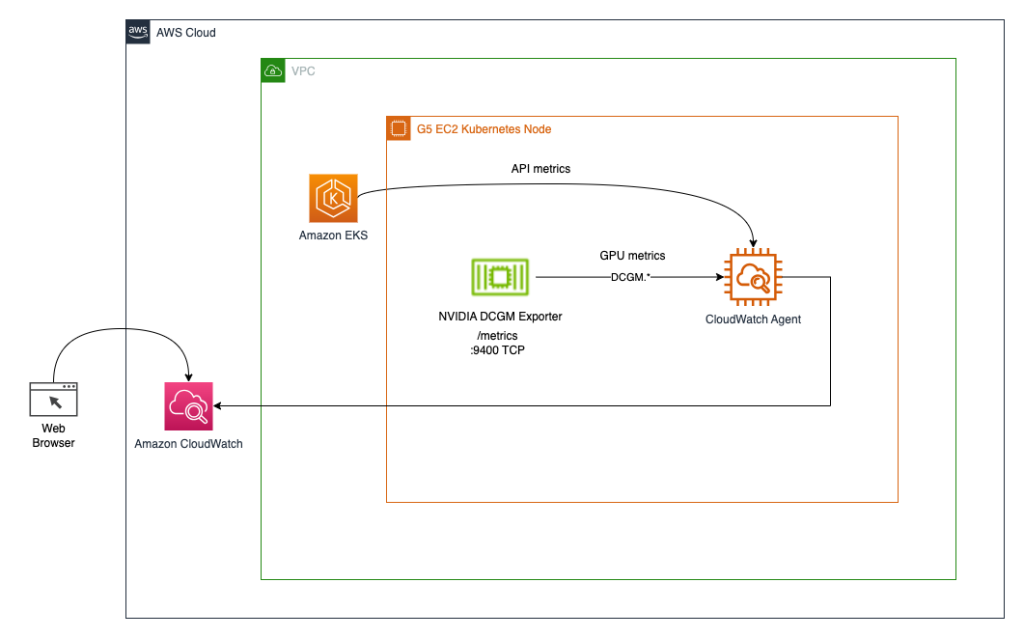
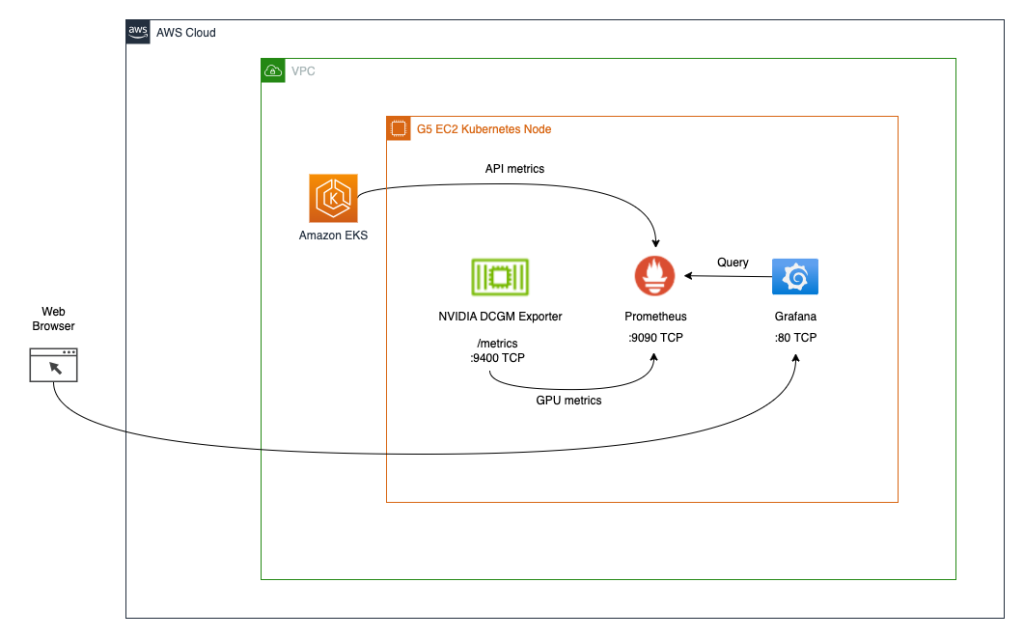

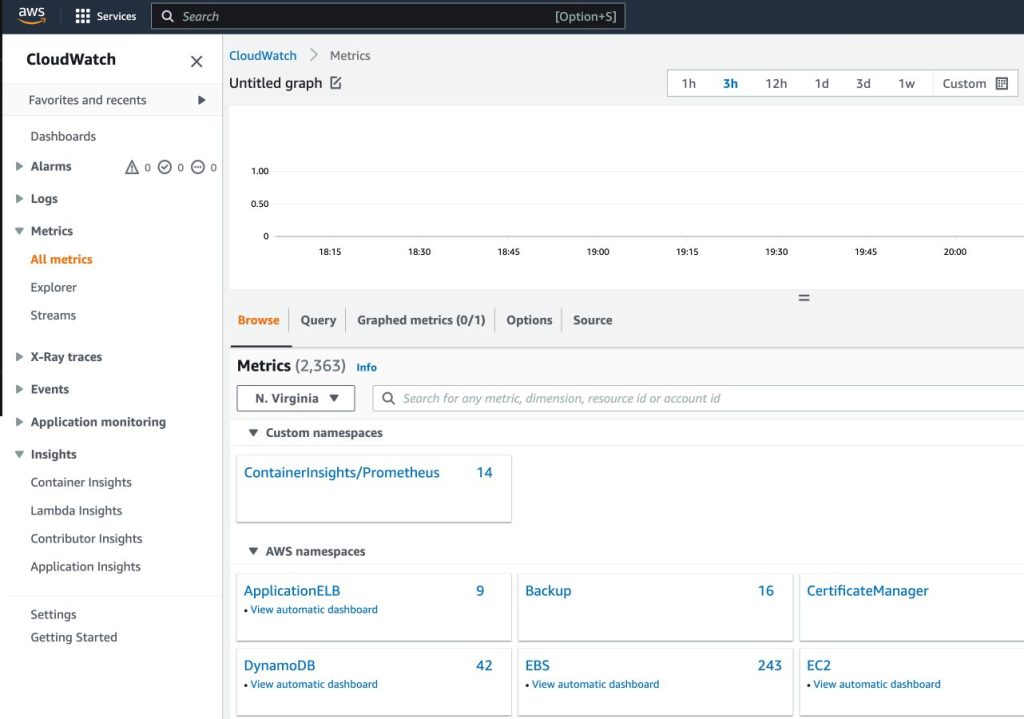

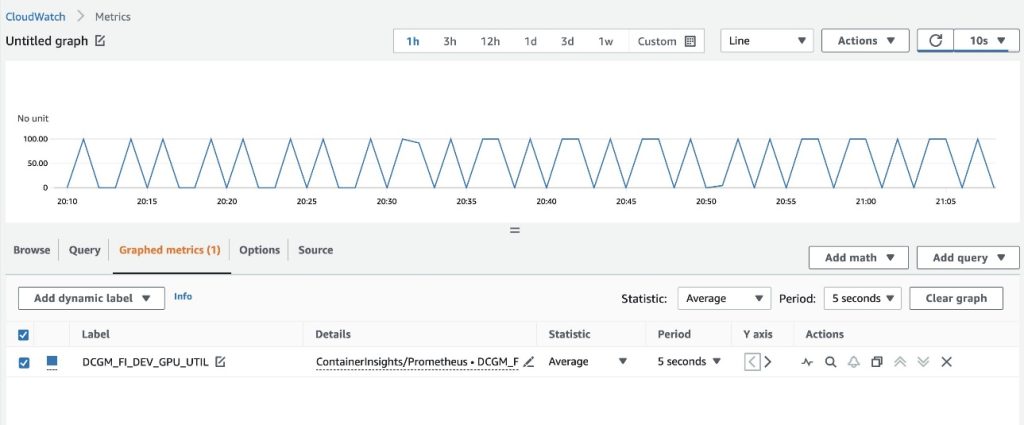
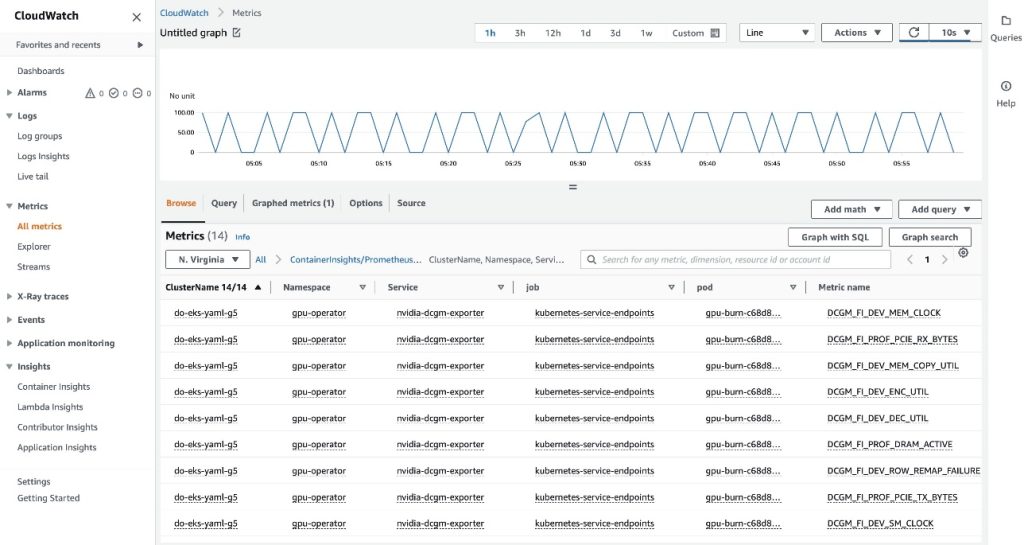
 icon within the upper-right nook of the tab to come out in a brand new window.
icon within the upper-right nook of the tab to come out in a brand new window.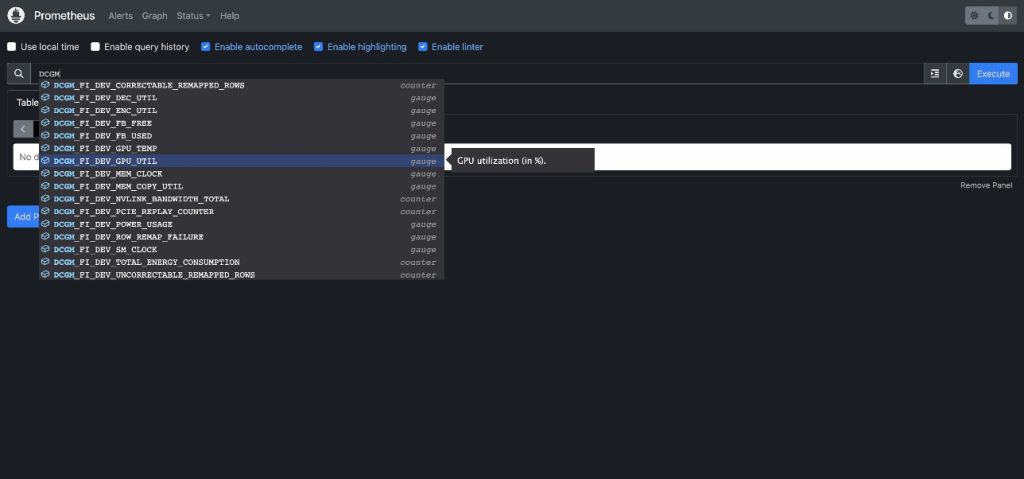
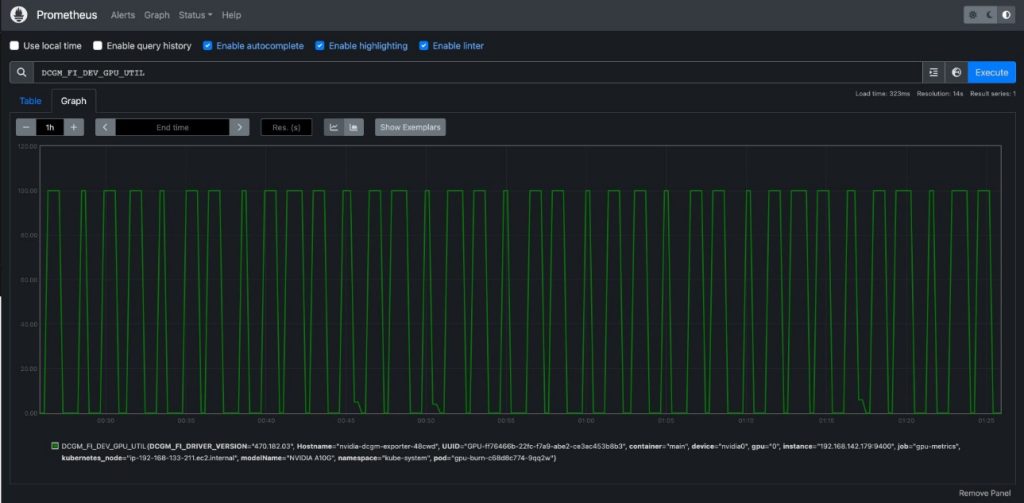
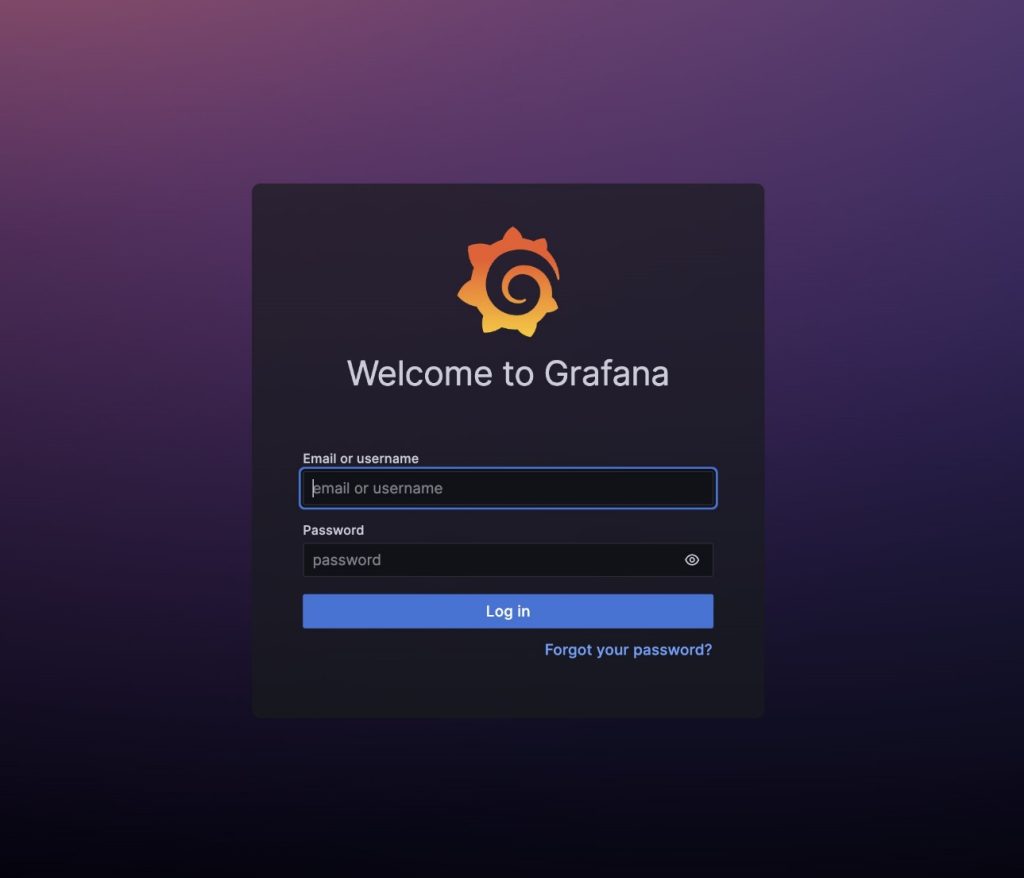
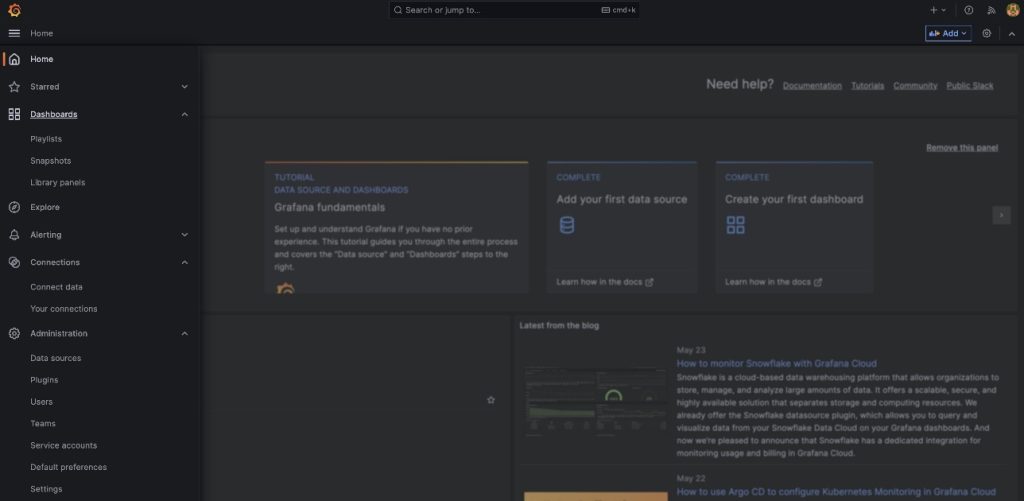
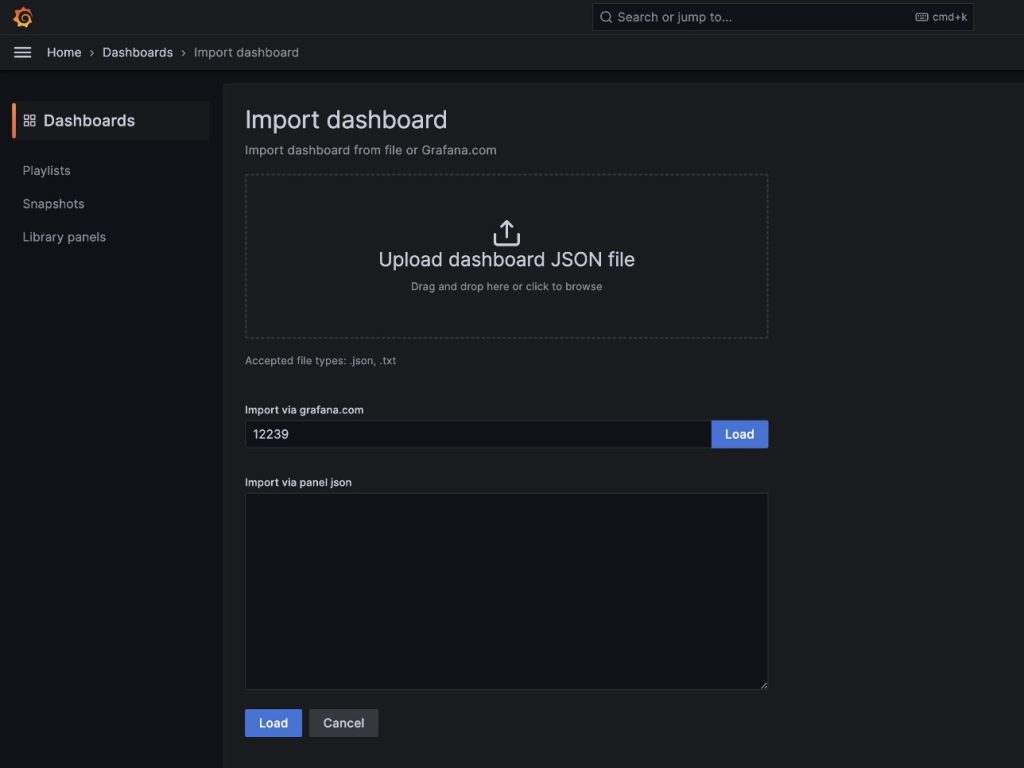
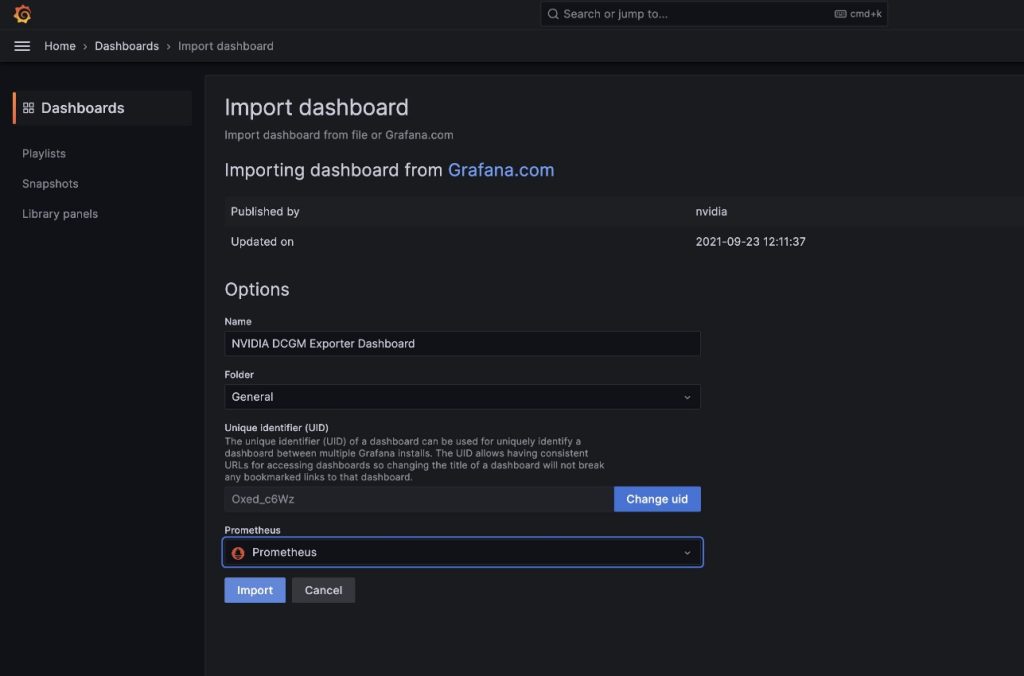
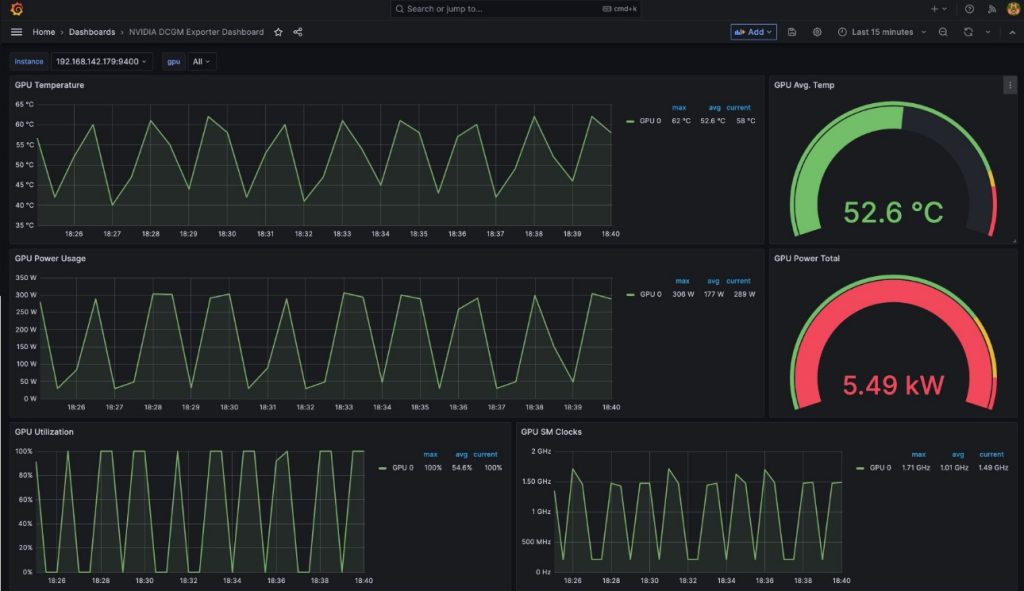

 Amr Ragab is a former Principal Options Architect, EC2 Accelerated Computing at AWS. He’s dedicated to serving to prospects run computational workloads at scale. In his spare time, he likes touring and discovering new methods to combine know-how into day by day life.
Amr Ragab is a former Principal Options Architect, EC2 Accelerated Computing at AWS. He’s dedicated to serving to prospects run computational workloads at scale. In his spare time, he likes touring and discovering new methods to combine know-how into day by day life. Alex Iankoulski is a Principal Options Architect, Self-managed Machine Studying at AWS. He’s a full-stack software program and infrastructure engineer who likes to do deep, hands-on work. In his position, he focuses on serving to prospects with containerization and orchestration of ML and AI workloads on container-powered AWS companies. He’s additionally the creator of the open-source do framework and a Docker captain who loves making use of container applied sciences to speed up the tempo of innovation whereas fixing the world’s largest challenges. In the course of the previous 10 years, Alex has labored on democratizing AI and ML, combating local weather change, and making journey safer, healthcare higher, and vitality smarter.
Alex Iankoulski is a Principal Options Architect, Self-managed Machine Studying at AWS. He’s a full-stack software program and infrastructure engineer who likes to do deep, hands-on work. In his position, he focuses on serving to prospects with containerization and orchestration of ML and AI workloads on container-powered AWS companies. He’s additionally the creator of the open-source do framework and a Docker captain who loves making use of container applied sciences to speed up the tempo of innovation whereas fixing the world’s largest challenges. In the course of the previous 10 years, Alex has labored on democratizing AI and ML, combating local weather change, and making journey safer, healthcare higher, and vitality smarter. Keita Watanabe is a Senior Options Architect of Frameworks ML Options at Amazon Net Companies the place he helps develop the trade’s finest cloud based mostly Self-managed Machine Studying options. His background is in Machine Studying analysis and improvement. Previous to becoming a member of AWS, Keita was working within the e-commerce trade. Keita holds a Ph.D. in Science from the College of Tokyo.
Keita Watanabe is a Senior Options Architect of Frameworks ML Options at Amazon Net Companies the place he helps develop the trade’s finest cloud based mostly Self-managed Machine Studying options. His background is in Machine Studying analysis and improvement. Previous to becoming a member of AWS, Keita was working within the e-commerce trade. Keita holds a Ph.D. in Science from the College of Tokyo.

